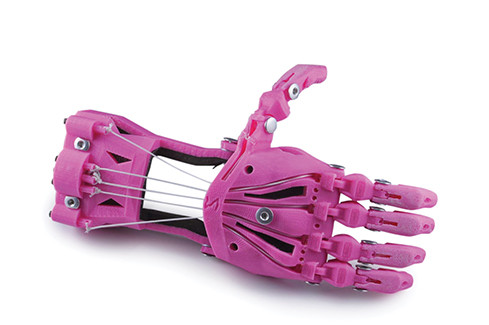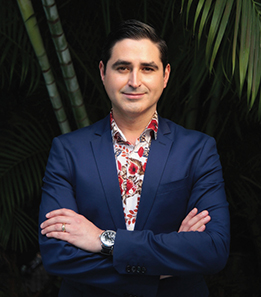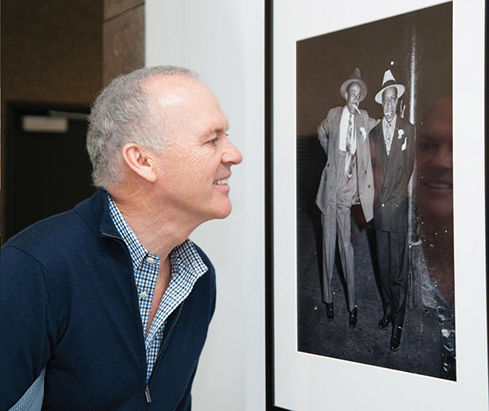 Summer 2016
Summer 2016|
Creating SPARKS on the North Shore
“We’re thrilled to be so close to achieving our goal of creating the next-generation Science Center,” says Ron Baillie, The Henry Buhl, Jr., Co-Director of Carnegie Science Center. The Science Center’s commitment to STEM learning and career awareness is something shared by the entire region, says Jerry MacCleary, president of Covestro LLC, which made a lead gift to the campaign. “If we intend to keep Pittsburgh at the forefront of technology and innovation, then we need to ensure the next generation is prepared to succeed in the STEM fields,” MacCleary says. “Carnegie Science Center has established itself as a leader in advancing STEM education. While all sectors of the community can contribute to the effort, the Science Center will always be a critical part of the equation.” More than 120 foundations, businesses, and individuals have made SPARK! pledges so far, including the DSF Charitable Foundation, which made the largest gift to date of $5 million. Others who made lead gifts of $1 million or more are Allegheny Health Network, Bob and Irene Bozzone, Suzy and Jim Broadhurst, the Buhl Foundation, The Burke Foundation, Eden Hall Foundation, The Grable Foundation, The Rossin Foundation, and Thomas and Alba Tull. “We applaud and thank the many who have stepped up in such an enthusiastic way to support the SPARK! Campaign,” says Suzy Broadhurst, campaign chair and a life trustee of Carnegie Museums. Broadhurst was a member of the volunteerleadership team that planned the opening celebration of Carnegie Science Center 25 years ago.
A Helping Hand
Imagine being 15 years old and creating a prosthetic hand for someone missing fingers at birth or as a result of war or disease. That’s what local students are doing thanks to a partnership between Carnegie Science Center’s Fab Lab and e-NABLING the Future, a global community of more than 1,500 members who collaborate to make free 3D-printed prosthetic hands. Over the past few months, the team at the Fab Lab, the Science Center’s popular new maker space, has been training young people ages 14-21 to fabricate the parts for the prosthetics. In June, those same students will lead a group of community volunteers in assembling them. The project is being funded by the Three Rivers Workforce Investment Board.
New Perspective on Warhol
A Head Above the Rest
Even for seasoned dinosaur hunters, it’s the kind of discovery that almost never happens: a nearly perfectly-preserved skull. Rubén Martínez of the National University of Patagonia San Juan Bosco made the “once in a lifetime” find in southern Argentina 19 years ago. And after years of analysis by a scientific team that included Carnegie Museum of Natural History paleontologist Matt Lamanna, on April 26 the world learned what the scientists had discovered: an entirely new species of long-necked dinosaur, named Sarmientosaurus musacchioi—a member of the titanosaur family, which includes the world’s largest land animals. “To truly understand a creature, you need to have its head,” says Lamanna, who joined Martínez in publishing their findings. “Because titanosaur skulls are super rare, lots of important aspects of how these dinosaurs lived and behaved have really been anybody’s guess.” Until now. After performing a CT scan of the 25-pound skull, the scientists learned a lot about what went on inside it, and what made this 95-million-yearold titanosaur tick. They were even able to deduce the vision of Sarmientosaurus and its ability to hear low-frequency airborne sounds outstripped those of most other sauropods; also, based on the balance organ of the inner ear, the animal probably lumbered with its snout facing down.
|
Ai Weiwei at The Warhol · Window into the Wild · Backyard Science · The Adventure Continues · Special Section: Tribute to Our Donors · President's Note · Face Time: Eric Dorfman · Artistic License: After Hours · Science & Nature: Teacher's Aide · Travel Log · The Big Picture
 |
Copyright © 2017 CARNEGIE Magazine. All rights reserved. |






